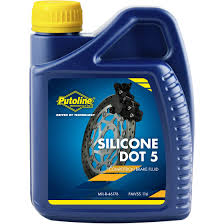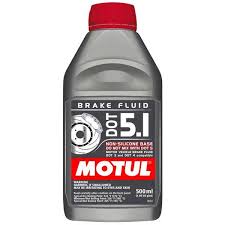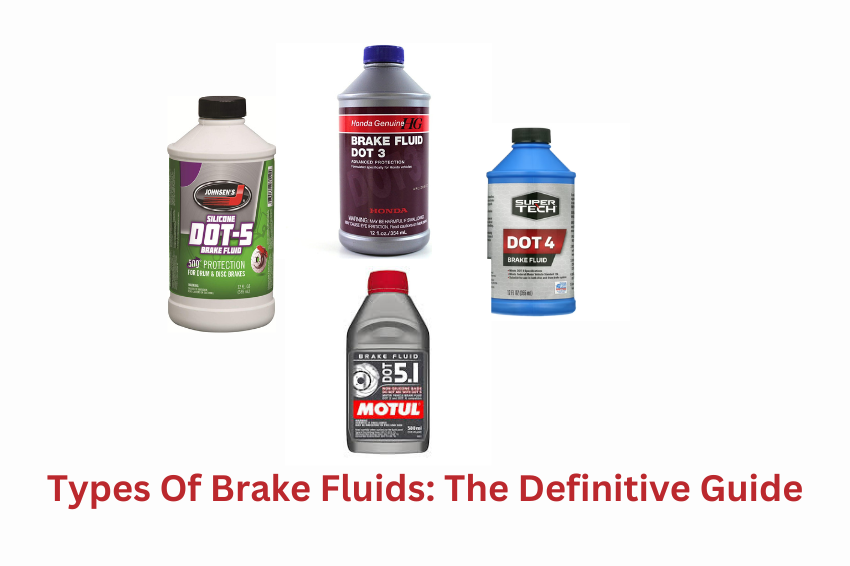Brake fluid is an essential component of your car’s braking system.
It helps transfer pressure from your foot to the brakes, stopping your car safely.
However, there are different types of brake fluids, each with its unique properties.
In this guide, you’ll learn about the different types and how to choose the right one for your vehicle.
What Are The Types Of Brake Fluids?
DOT 3 Brake Fluid
DOT 3 brake fluid is a hydraulic fluid used in automotive braking systems.

It’s a glycol-based fluid that helps transfer pressure from the brake pedal to the brake calipers, squeezing the brake pads against the rotors to slow or stop the vehicle.
Key Properties Of DOT 3 Brake Fluid
Boiling Point:
DOT 3 typically has a boiling point of around 205 degrees Celsius (401 degrees Fahrenheit).
This lower boiling point compared to newer brake fluid types makes it more susceptible to vaporization under high temperatures, which can lead to reduced braking performance and a spongy brake pedal.
Viscosity:
DOT 3 has a specific viscosity that ensures proper fluid flow through the brake system.
A viscosity that is too high or too low can affect braking efficiency.
Hygroscopic Properties:
DOT 3 is hygroscopic, meaning it absorbs moisture from the air.
Over time, this moisture can lower the boiling point of the fluid, making it more likely to vaporize and causing braking problems.
Applications Of DOT 3 Brake Fluid
DOT 3 is commonly used in older vehicles and in some specific applications where a lower boiling point is acceptable.
It’s generally a good choice for vehicles that are not subjected to extreme driving conditions or frequent heavy braking.
Advantages Of DOT 3 Brake Fluid
- Cost-Effective: DOT 3 is typically more affordable than newer brake fluid types like DOT 4 and DOT 5.
- Widely Available: It’s readily available at most automotive parts stores and service stations.
Disadvantages Of DOT 3 Brake Fluid
- Lower Boiling Point: As mentioned earlier, DOT 3’s lower boiling point can lead to reduced braking performance under high temperatures.
- Moisture Absorption: The fluid’s hygroscopic properties can lead to decreased performance over time.
DOT 4 Brake Fluid
DOT 4 brake fluid is a hydraulic fluid used in automotive braking systems.

It’s a glycol-based fluid that offers improved performance and longevity compared to DOT 3 brake fluid.
Key Properties Of DOT 4 Brake Fluid
Boiling Point:
DOT 4 typically has a boiling point of around 230 degrees Celsius (446 degrees Fahrenheit).
This significantly higher boiling point compared to DOT 3 makes it less susceptible to vaporization under high temperatures, which is important for maintaining consistent braking performance.
Viscosity:
DOT 4 has a specific viscosity that ensures proper fluid flow through the brake system.
A viscosity that is too high or too low can affect braking efficiency.
DOT 4 typically has a higher viscosity than DOT 3, which can help to maintain pressure in the braking system.
Hygroscopic Properties:
Like DOT 3, DOT 4 is hygroscopic and absorbs moisture from the air.
However, it is formulated to be more resistant to moisture absorption, helping to maintain its performance over time.
Applications Of DOT 4 Brake Fluid
DOT 4 is commonly used in modern vehicles, especially those designed for high-performance driving or frequent heavy braking.
It’s a popular choice for sports cars, SUVs, and other vehicles that demand reliable braking performance.
Advantages Of DOT 4 Brake Fluid
- Higher Boiling Point: DOT 4’s higher boiling point provides improved braking performance under extreme conditions, such as racing or towing heavy loads.
- Better Moisture Resistance: DOT 4 is less likely to absorb moisture from the air, helping to maintain its performance over a longer period.
- Improved Compatibility: DOT 4 is generally compatible with DOT 3 brake fluids, but it’s recommended to consult the vehicle owner’s manual for specific guidelines.
Disadvantages Of DOT 4 Brake Fluid
- Higher Cost: DOT 4 is typically more expensive than DOT 3.
- Potential for Compatibility Issues: In some cases, mixing DOT 4 and DOT 3 brake fluids can lead to performance issues.
DOT 5 Brake Fluid
DOT 5 brake fluid is a unique hydraulic fluid used in automotive braking systems.

Unlike DOT 3 and DOT 4, which are glycol-based, DOT 5 is silicone-based.
This fundamental difference gives it specific properties and applications.
Key Properties Of DOT 5 Brake Fluid
Boiling Point:
This makes it highly resistant to vaporization under extreme conditions, ensuring consistent braking performance even in demanding situations.
Viscosity:
DOT 5 has a specific viscosity that ensures proper fluid flow through the brake system.
While it may have a slightly different viscosity compared to DOT 3 and DOT 4, it is designed to perform optimally in braking systems.
Hydrophobic Properties:
Unlike other brake fluids, DOT 5 is hydrophobic, meaning it repels water.
This prevents moisture from mixing with the fluid, which can significantly lower its boiling point and compromise braking performance.
Applications Of DOT 5 Brake Fluid
DOT 5 is primarily used in vehicles designed for extreme conditions or specific applications.
Here are some common uses:
- Racing Vehicles: DOT 5 is often used in racing cars due to its high boiling point and resistance to extreme temperatures.
- Military Vehicles: Military vehicles may use DOT 5 for its durability and performance in harsh environments.
- Classic Cars: Some classic car enthusiasts prefer DOT 5 due to its compatibility with certain vintage brake systems.
Advantages Of DOT 5 Brake Fluid
- High Boiling Point: DOT 5’s exceptional boiling point ensures consistent braking performance under extreme conditions.
- Moisture Resistance: Its hydrophobic nature prevents moisture contamination, maintaining fluid quality and braking efficiency.
- Corrosion Resistance: DOT 5 is less prone to corrosion, which can extend the lifespan of brake system components.
Disadvantages Of DOT 5 Brake Fluid
- Incompatibility: DOT 5 is not compatible with DOT 3 or DOT 4 brake fluids. If switching to DOT 5, a complete system flush is necessary.
- Limited Availability: DOT 5 may be less widely available compared to DOT 3 and DOT 4, especially in some regions.
- Cost: DOT 5 can be more expensive than other brake fluid types.
DOT 5.1 Brake Fluid
DOT 5.1 brake fluid is a hydraulic fluid used in automotive braking systems.

It’s a glycol-based fluid with a high boiling point, making it suitable for demanding driving conditions.
Key Properties Of DOT 5.1 Brake Fluid
Boiling Point:
DOT 5.1 typically has a boiling point of around 250-260 degrees Celsius (482-500 degrees Fahrenheit).
This higher boiling point compared to DOT 3 and DOT 4 makes it less likely to vaporize under extreme temperatures.
Viscosity:
DOT 5.1 has a specific viscosity that ensures proper fluid flow through the brake system.
A viscosity that is too high or too low can affect braking efficiency.
Hygroscopic Properties:
Like other glycol-based brake fluids, DOT 5.1 is hygroscopic and absorbs moisture from the air.
However, it is formulated to be more resistant to moisture absorption, helping to maintain its performance over time.
Applications Of DOT 5.1 Brake Fluid
DOT 5.1 is commonly used in modern vehicles, especially those designed for high-performance driving or frequent heavy braking.
It’s a popular choice for sports cars, SUVs, and other vehicles that demand reliable braking performance.
Advantages Of DOT 5.1 Brake Fluid
- High Boiling Point: DOT 5.1’s higher boiling point provides improved braking performance under extreme conditions, such as racing or towing heavy loads.
- Better Moisture Resistance: DOT 5.1 is less likely to absorb moisture from the air, helping to maintain its performance over a longer period.
- Improved Compatibility: DOT 5.1 is compatible with both DOT 3 and DOT 4 brake fluids, making it a versatile choice for many vehicles.
Disadvantages Of DOT 5.1 Brake Fluid
- Higher Cost: DOT 5.1 is typically more expensive than DOT 3 and DOT 4.
- Potential for Compatibility Issues: While generally compatible, mixing DOT 5.1 with DOT 3 or DOT 4 can sometimes lead to performance issues.
